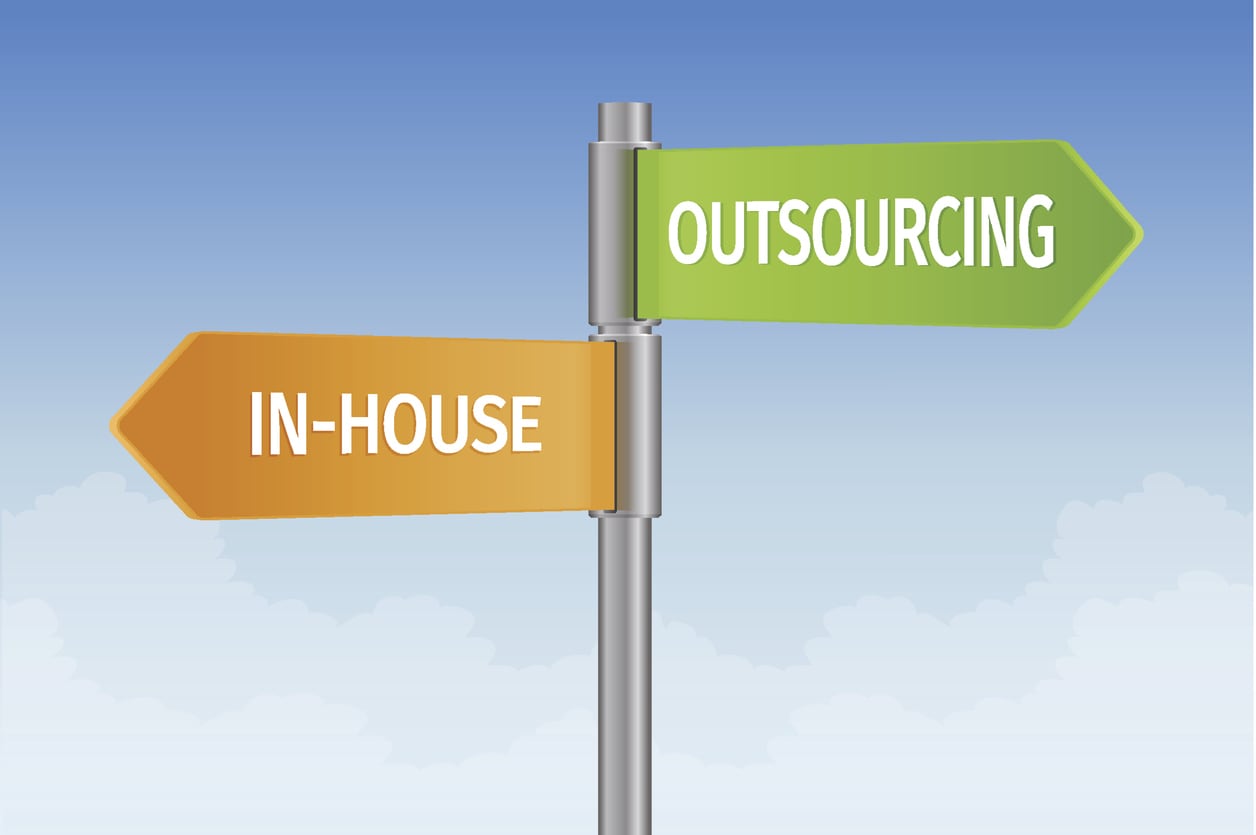
September 21, 2018
Are you actively shopping for or seeking information on a warehouse management system? The right solution can help improve order fulfillment, boost inventory visibility, and automate data collection. Follow these simple steps for choosing a WMS, and you'll soon be on your way to an optimized warehouse operation.
Warehouse management systems (WMS) can process data quickly and coordinate movements within the warehouse. They can also produce reports and handle large volumes of transactions, such as those inherent in e-commerce operations.
The potential benefits of having a WMS in place include:
Before deciding a WMS is right for your business, you need to analyze the costs and benefits that you will achieve when implementing this system. A WMS can involve capital investment and include running costs, but it is as effective as your personnel make it out to be.
A WMS is not a quick-fix solution, and it is more than an inventory control system and data collection tool. It is a system that helps automate your warehousing operations as much as possible, and will need commitment from the entire warehousing team and senior management to ensure that the system is set up correctly, used properly, and optimized regularly.
A WMS is very much a tactical execution system, and forms an important component of strategic business improvement. But, when you decide to invest in a WMS, these seven steps can help you choose the best solution for your warehouse operation.
When considering a WMS, the justification process is important because it allows you to set a budget for your project, and focus on the functional requirements when selecting suppliers.
The key areas to consider are:
The more daily transactions—such as pallet moves and picks—and locations in the warehouse, the greater the potential for ROI, and the greater the justification. In addition, warehouses use expensive equipment where optimization can bring significant savings—sometimes to such an extent that less equipment needs to be purchased and fewer staff employed.
The methods WMS vendors use to set pricing fall into four main categories:
Ensure that the suppliers you approach quote prices for each of these categories. Ask them to indicate which prices are fixed and which are variable. Watch out for hidden fees such as travel costs and project management time.
Summarize all the costs in a spreadsheet, showing the initial outlay, and then costs for years one to five with accumulated totals. You might be surprised by the results.
Factor in hardware and infrastructure costs, which have to be considered in terms of project budget and ROI, but often can be managed separately, with interdependencies to the main project.
Modern WMS are highly configurable—typically by the end user—and should be capable of working in virtually any type of warehousing environment.
In the past, producing long, detailed ITTs (Invitation to Tender) documents (or RFPs) was an important part of the WMS selection process. This reflected the limited functionality that was present in most systems at the time. The disadvantage of ITTs is that they cannot hope to take account of a company's future requirements, and are often over-prescriptive.
The other disadvantage is that many WMS providers will often not respond to ITTs. They consume a vast amount of time and resources, which the vendor might prefer to spend on other projects under their own control.
ITT templates can be downloaded from the Internet; however, many of these are, or were originally, prepared by WMS vendors and are slanted toward their products. Most WMS vendors, therefore, view such documents with suspicion.
If your enterprise resource planning or business system already has a WMS module, analyze it first. The same due diligence applies to this selection as to any other system, but normally any small shortfalls in functionality are outweighed by reducing any risk of systems not interfacing with each other reliably and accurately.
Similarly, if your warehouse is highly automated—with cranes, conveyors, or sortation systems—you may wish to focus on the WMS provided by the equipment's automation systems company. This is typically known as a warehouse control system.
In-house development is rarely viable, due to the package nature of the WMS market. A typical WMS vendor might amortize its continuous development costs over more than 100 clients. These same 100 clients serve as a valuable and thorough proving ground for the product in question.
In-house development is sometimes viable if the overall requirements are particularly specialized, or require specialized integration with existing in-house systems.
First, prepare a short request for information (RFI) document; no more than a few pages long. In this document, describe your business, future business direction, warehouse, and plans for the warehouse. Then describe in broad terms what you want to achieve with the WMS.
By this stage, you will have completed an operational specification for the warehouse to gain capital approval. The key elements from this specification form an ideal base for the RFI—for example, number of loading bays, reserve locations, pick face locations, and pick-and-pack station details. Of particular relevance are the types of users, such as administrative users, forklift drivers, pickers, and packers.
Provide a guide to the number of transactions per day (including receipts, putaways, picks, and dispatches), and indicate any significant peaks across the day, week, or month.
Do not try to describe how the system should work—in fact, it can be dangerous to be too specific at this point, as there may be faster, better, less expensive ways of doing things. Part of the selection process is to see how potential suppliers can guide you in this regard. If necessary, you can use the services of a consultant to help you.
Within the RFI, ask the vendor for budget costs and implementation time frames. Ask for supplier information, including:
Send this RFI to six to 10 suppliers initially. Focus on suppliers that have experience in your market—this is particularly the case if you are a third-party logistics provider. WMS vendors with no experience in this sector are unlikely to have the functionality and expertise to help you. Focus on suppliers that have a track record linking to any business or ERP system you are operating.
At this stage, you need to decide whether to purchase the software and hardware outright, or to rent the software and operate it on a third-party server platform.
A Software-as-a-Service (SaaS) WMS is an Internet-based application developed, hosted, and maintained by a third-party software provider on secure servers. The vendor rents out the system to a number of different clients. Those clients, in turn, choose the various modules within the software they require, and pay for them as they use them.
The advantages of a SaaS system are:
An SaaS system will be attractive to start-up companies, and small and medium-sized enterprises, although it could also benefit larger companies looking for a temporary fix.
Potential disadvantages of a SaaS WMS include the possibility of poor Internet links between the companies, and potential worries over data security.
Produce a short list of three to five WMS suppliers. Price is not the main criterion at this stage, but can be used to rule out suppliers that will exceed your budget. Arrange for the suppliers to visit you for an informal meeting. This will help you get a feel for their company—how professional they are, how carefully they listen and respond to your needs, and how well they answer your questions.
Before you get into the detailed demonstration stage, do a little more checking on each supplier; this will help you reject unsuitable suppliers at an early stage. A good way of doing this is to telephone-interview at least six reference sites—preferably sites you choose from a longer list. These calls should all be made with the suppliers' knowledge, unless you have contacts with their clients already.
Ask the short-listed suppliers to provide you with a tailored demonstration. Get them to focus on what you believe is especially important for your operation—for instance, it might be pick face replenishment, or kitting and assembly. At some time during the selection process, ask them to give you an overview of their company, products, and people. Also ask for an overview of their product strategy.
Visit the main office to gain a better understanding of their culture, management, and teamwork. It is very important to get a good 'people' fit with any organization you select. It is always worth asking suppliers why they think they should be selected for your project.
The reference site visit is often the crux of supplier selection. Make sure you are given a choice of sites, not just one. Also make sure it is similar to yours in size and processes—or, preferably, slightly larger and more complex.
Now is also the time to specify and price out any identified gaps in functionality. Ask the supplier to provide an accurate project cost, clearly identifying any variable charges. This is where the contacts you have developed with the suppliers' reference sites will pay off, as you can talk to them about how well the supplier worked within the set budget and time frames.
Choose the most appropriate WMS supplier for your warehouse. Utilize a decision matrix, taking into account the various criteria you have evaluated.
Tags:

Verst Logistics has been servicing logistics customers since 1966, with a number of partnerships lasting 20+ years. With that in mind, and given our collaborative history with several major brands,...

Are you searching for product fulfillment solutions? Most businesses depend on effective product fulfillment. If you regularly ship out products to your customers, those customers likely depend on...
Resources
Connect